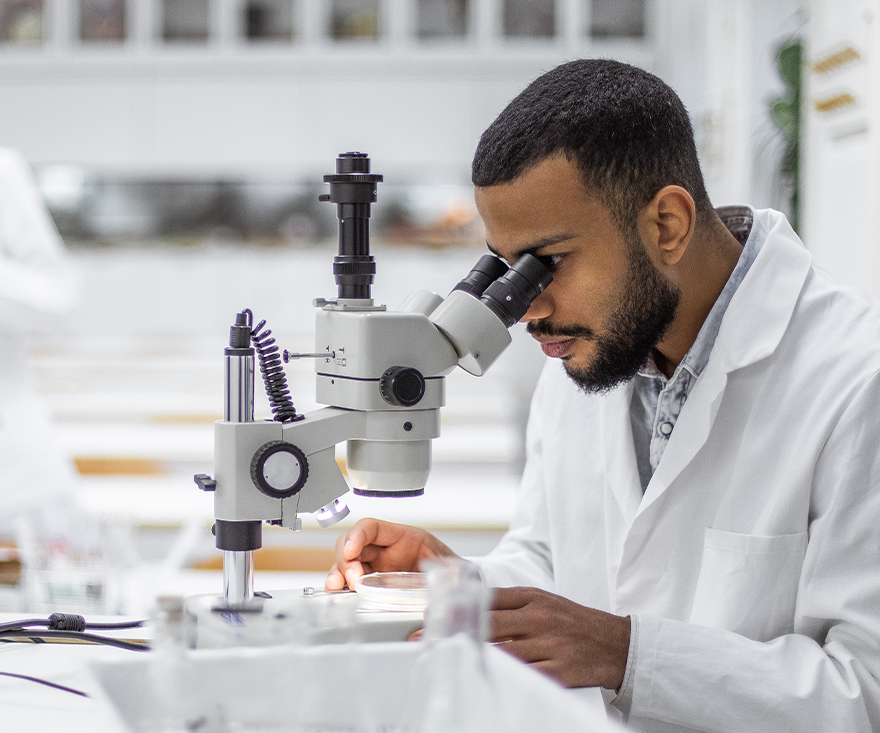Drug discovery has a long history of serendipity: unearthing Artemisinin in the myriad of Chinese traditional medicine herbs, discovering penicillin after forgetting a petri dish on a table, or the discovery of lithium for psychiatry. The point is, you never really know where the next step-changing drug will come from.
Pharmaceutical companies invest in large physical screening methods to search through millions of compounds, but discoveries are often limited, for instance, only finding one promising hit targeting PCSK9 (for hypercholesterinaemia) after screening more than 2.5 million different compounds. That is just one of the variables that accounts for the ever-increasing cost of bringing a new drug to market — roughly $1 billion per new product.
The brute force approach of screening millions of potential molecules for the potential of few successful hits raises a couple of critical questions: can we leverage another technology that is rapidly reshaping our lives — artificial intelligence? What if we combine AI and biotech to make drug discovery faster, more efficient, safer, and, ultimately, cheaper?
In the last couple of years, we have seen companies entering this space, leveraging the computational power of machine learning algorithms to understand the biology of health and disease, and design drugs targeting specific “switches” that turn a healthy body into a sick one. It sounds promising, and there are signs of success, but it remains to be seen if the promise can take hold on a greater scale.
What should we look for? To start, a successful Phase II trial by a product that was discovered by AI. We are really close as both BenevolentAI and Recursion Pharmaceuticals have molecules currently undergoing Phase II trials.
Two Dimensions to Categorize AI-driven Biotech Companies
Pharmaceutical companies aiming to marry biotech with AI/machine learning need to consider two dimensions: application and methodology.
- Application: Where is the innovation happening
- Target Identification: What target in the body or cell do we need to hit to be effective and safe for a specific disease? Which molecular pathways are involved in a certain disease? Which proteins/cellular processes could be targeted? This involves high complexity through biology: many layers of knowledge are needed, and a lot of necessary research has not yet been completed
- Hit Identification: How do we hit the identified target with a drug? What characteristics are needed for the drug to be able to modulate that specific protein/cellular process identified previously during Target ID? It involves high computational complexity: science of atom-to-atom interaction is relatively well known, but requires a myriad of calculations and simulations
- Methodology: What is the company’s philosophy in terms of leveraging AI/ML to the problems of early drug discovery
- Hypothesis Driven: Approach involves a priori definition of clinical hypotheses on conditions to treat (these can be refined during the identification process). This approach relies on the experience of senior human “drug hunters” that use the AI/ML algorithms as a tool to be more efficient, precise, and sometimes surprised by and with the machine
- Non-Hypothesis Driven: Approach leverages technology to identify solutions without specific conditions to target being specified at the outset. This approach relies mainly on the AI/ML algorithms to get to an answer, taking the human judgement and experience (mostly) out of the loop
Evaluating a Company’s AI/ML Activity
We identified three questions that individuals and companies should ask when looking at this exciting intersection of biotech and AI:
- Does the company have an internal development pipeline?
Many start-ups will connect with established pharma companies offering AI/ML as a service. This can generate constant cash-flow, with potential milestone payments (depending on the agreement). However, the real value will only be tapped when companies own their internal pipeline at least until Phase II of clinical development, requiring a different investor profile willing to wait for the deferred cash-flow of a AI/ML driven biotech company - Does the company have real collaborations / investments from incumbent pharmaceutical companies?
Virtually all companies in the sector will tout their collaborations with major incumbents on their websites. Look one step further: have those collaborations led to real assets on the collaborator’s pipeline (e.g. BenevolentAI’s collaboration with AstraZeneca) or has the collaboration led to investments in the company (e.g. Sanofi, Bristol Myers Squibb, Novo Holdings all investing in Exscientia) - Is the therapeutic area / disease focus commercially on point?
The ultimate question companies need to ask is about unmet medical need and if the pipeline is able to fill a therapeutic niche in terms of better treatments. Ultimately it is not a question of the technology, but if the products make it to the market with commercial success. The promise of the AI/ML Biotech companies is to deliver effective drugs quicker, and by considering toxicity already at the TargetID/HitID stage to increase the success rate during clinical development (currently too early to assess increased success rates, wait for the before mentioned Phase II readouts)
We covered these topics in much more depth during a recent webinar with Ivan Griffin, Chief Operating Officer and Co-founder of BenevolentAI.
To learn more contact Matthew Weinstock, Senior Editor, Health and Life Sciences.
